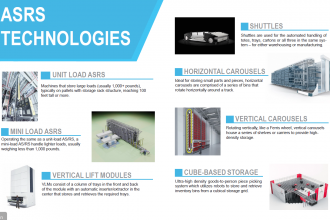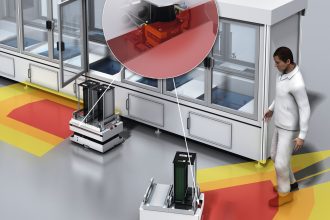Thinking About Warehouses Differently: How High-Density Inventory Storage Can Transform Your Business
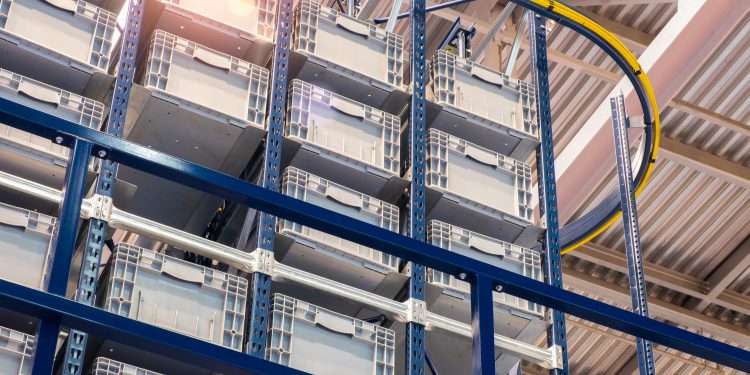
Warehouse: noun, ware·house (wer-ˌhau̇s): a structure or room for the storage of merchandise or commodities (Merriam-Webster)
Warehouses BA: Before Automation
For over a century, a warehouse was a place to store things; the place where a business or manufacturer’s products sat until there was room for it on a store shelf somewhere. Built on the edges of town, the warehouse was an uninviting, windowless, cavernous space that was out of sight, out of mind for the consumer and, if that merchandise wasn’t selling, a financial drain on a business.
Today, the warehouse is an activity hub and in the modern, fast-driven world of e-commerce, it is the business. Someone anywhere in the world can place an online order and have an item shipped directly to their door. And where does that product come from? Not from a store shelf. Instead, it comes from the warehouse, a place that is alive with people and machines to move those items along.
However, old ideas about warehouses remain. For the business a warehouse, or two or three, is still thought of as a place that racks up costs – the cost of utilities, security, payroll, leases, repairs, and more. Most managers spend their time thinking about how to reduce those costs. Then when it’s time to scale-up sales or if a particular product catches fire, the business builds more warehouses, which in turn increases their costs. But what if the warehouse you already had could add profits to your business?
Welcome to High-density Inventory Storage
High-density inventory automatic storage and retrieval systems (ASRS) can open up your warehouse operations in ways that were unimaginable a few short years ago. These new systems will not only reduce warehouse costs but help businesses find new ways to increase profits. How?
High-density inventory ASR systems allow a business to store more items and more SKUs in the space they already have. No need to buy additional land, build additional buildings, and hire additional people. Instead, high-density systems use the blank spaces found in traditional warehouses, typically the travel aisles that people and machines move through to get from one end of the warehouse to the other.
Think about all the floor-to-ceiling travel aisle space in your warehouse. If you could turn that space into inventory, how much more inventory could you store in one building? How many more SKUs could your company sell?
Taking warehouse space from here…
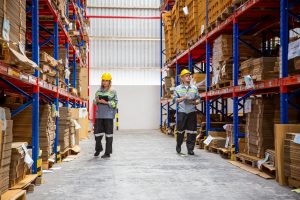
…and using it here.
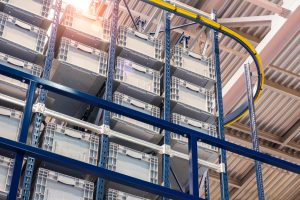
High-density inventory ASR systems utilize the existing space in a warehouse and in some cases can increase inventory 70-80 percent without signing a new lease or building a new facility. While the benefits of increased inventory are obvious, these benefits go beyond utilizing empty space. High-density inventory solutions can provide value for customers and opportunities to increase sales.
“High-density inventory is all about putting more into the exact same footprint,” says TJ Fanning, Vice President of Sales for Kardex, MHI group member, and an ASRS industry expert. “Combing that with automation to drive efficiency means adding SKUs, lowering pick times, and reducing (human) touches. If those are your new norms, how would your business work differently?”
Work Denser, Not Harder
High-density inventory systems stack bins tighter together by putting them in the spaces once reserved as travel aisles for pickers. Instead of human pickers walking through 6- to 10-ft. aisles in a 20,000-sq.-ft. warehouse, those bins can now be stacked to within six feet of the facility ceiling. Robots use that six feet of space to pull inventory from the bins below, moving them to workstations where human workers can then consolidate, pack, and ship orders.
High-density systems reduce facility and operating costs. They allow warehouses to hold more items in their existing buildings so there’s no need to lease another building or spend months and millions of dollars building another facility. These systems operate on energy-efficient systems, so they don’t take more energy to run, nor do you need more employees to run them. All these advantages reduce facility costs.
However, companies shouldn’t limit themselves to just lowering costs. That’s because these systems allow companies the flexibility to add on services, thus increasing each customer’s order value. Here are few examples of how companies can add value:
- Lower shipping times. With more inventory taking up less space and speedy robots picking that inventory more quickly and efficiently, more shipping stations can be set up in the newly opened space, thus lowering shipping times. A business that was shipping products in 5-7 days with a traditional inventory system can now offer 2-day or even next-day delivery, a highly prized value-add that today’s customers are willing to pay more for.
- Build a loyal customer base. Businesses can now add new products for their customers thus expanding their markets. For example, a plumbing supply business can now hold a variety of parts and tool SKUs, which will appeal to a larger group of plumbers and the manufacturers they work with. It allows plumbers to provide their services more efficiently because they won’t have to drive all over town searching for different parts from different manufacturers. This frees up their time to operate their plumbing services more efficiently and speed up service times, making their customers happy. It also allows them to offer higher-end, customizable home products instead of standardized, one-size-fits-all parts and systems. For the consumer apparel retailer, their buyers can easily add new product SKUs to keep their markets fresh, and their customers engaged. These systems also make retailers more nimble, allowing them to add, change, or combine SKUs as their customers gravitate to new and different products.
- Go custom. Businesses with the ability to store more items in less space can add custom services to their products, such as engraving or embroidery. High-density inventory allows the company to store “blank” items for custom orders in the same building as their ready-to-ship items. It also frees up space for those companies to move or even create custom engraving/embroidery stations into their existing buildings.
By moving to high-density inventory ASRS, the business has now the ability to increase the amount of revenue per order and revenue per square foot of warehouse space, while lowering the cost per pick.
“Historically, retailers and 3PLS tracked the dollars it costs to pick and ship,” noted Fanning. “The more strategic companies are now thinking about how much revenue can they produce per square foot. Your business strategy now has a whole new unlock.”
How does that change your definition of a warehouse?
For more information about the AS/RS group: mhi.org/as-rs
For further articles from the Automated Storage/Retrieval Systems (AS/RS):
Act Now to Beat Seasonal Order Picking Peaks: Your Complete Guide to Warehouse Success
Adding Robots to the Cold Chain
March 4 MHI Tech Talk Explores Integrating Racks With Automation
Is a VLM Right for Your Operations?
Understanding ASRS Software Integration
ASRS Is Perfect For Social Distancing
Podcast: How Does An ASRS Solution Differ And Complement AMRs/AGVs?


